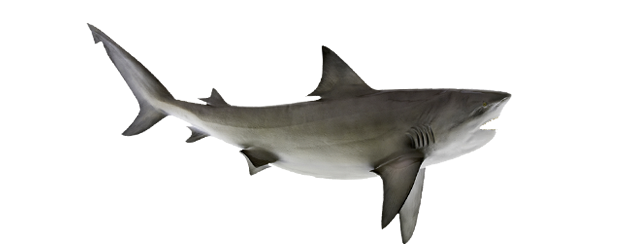Shark, Bull

View Regulations

Scientific Name
Carcharhinus leucas


Common Names
Ground shark, Cub shark, Freshwater whaler, River whaler, River sharks, Estuary whalers, Shovelnoses, Slipway greys, Swan river whalers


Description
The Bull Shark takes its name from a hefty body and bullish features which includes a shortened snout and broad rounded head. Its coloration can range from grey to brown fading to a whitish underbelly. Its first dorsal fin is rather large and the top of its tail outsizes the bottom part of its tail.


Habitat & Behaviour
Bull Sharks are unique in their ability to penetrate far upstream in freshwater and are typically found in coastal areas but have been found far inshore. Adult Bull Sharks can often be found waiting at inflows into the ocean.


Natural Prey
The Bull Shark makes a diet on schooling fish and other smaller sharks, sometimes resorting to cannibalism. They have also been known to favor rays and occasionally eat dogs. Cephalopods, crabs, shrimp and even sea turtles can round out the Bull Sharks diet.


Handling Tips
One of the most dangerous sharks to handle. It goes without saying that you should steer well clear of any sharks mouth. They also have rough skin which if whipped on you can leave a rash. Little ones wiggle a quite a bit, grab behind gills and hold tail. Larger sharks tail snare if you can and keep in water. When releasing sharks try to leave as little line as possible. Hooks rot out in a few weeks. Pro Angler supports shark conservation and recommends you catch and release. If brought into the boat, leave for 15-20 minutes before handling, shark will tire and be easier to handle as their body is very strong as well. Known to even play dead before snapping at you, so be careful!

- Lucky Tackle Box
- Billfish Bounty in the Heart of the Mayan World – Guatemala
- The Best Species of Shark to Catch
- How to Catch a Shark: what equipment do you need?
- The Best Winter Fishing Spots in Texas






